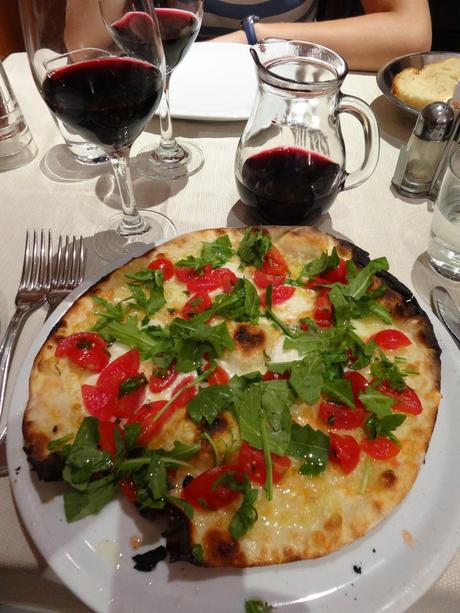 For a long time, I went through waves of being terrified of doing an RTW trip because of my tree nut allergy. After all, eating delicious local food is one of my favorite things about traveling. How on earth was I going to avoid eating tree nuts in countries where I couldn't speak the language?
For a long time, I went through waves of being terrified of doing an RTW trip because of my tree nut allergy. After all, eating delicious local food is one of my favorite things about traveling. How on earth was I going to avoid eating tree nuts in countries where I couldn't speak the language?Well, the only way I got over this fear was to just go for it and prove to myself that I could travel, eat great food, and not die. Although I did have a few close calls in our 15 months of travels, I never had to use my Epi-Pen or go to the hospital. I attribute this to lots of pre-trip research and planning, and to our handy translation cards that we carried everywhere with us. Here's a look into the detailed steps that we followed before and during our trip that helped keep me healthy and alive!
Expressing Your Allergy in the Local Language

First and foremost, know the words for your allergen in the local language. This will provide a first layer of protection when reading menus that aren't in English, highlighting dishes that you will know for sure contain your allergen.
The next and most important layer of protection is to have a card printed in the local language that states what you're allergic to, and that you may be very sick/die/whatever if you eat those items. Add any other information as necessary, for example state whether you need utensils and pans to be clean and not come into contact with your allergens, too.
So how do you create these cards and figure out the translations? For my allergy to tree nuts, things were a bit tricky as most languages don't have a word or phrase like "tree nuts", so I had to list each and every nut that I was allergic to. As a first pass, I used Google Translate to translate everything. Secondly, if we knew someone who spoke that language, we would ask them to verify the correct translation. Failing this, we waited until we arrived in the country and asked our Airbnb host/hotel concierge/hostel worker, who were usually fluent in both English and the local language, if my translation was correct.
There are also companies that make allergy cards for you, but I never found any that said exactly what I needed them to. They can also be somewhat pricey. Especially since we visited dozens of countries on our trip and would have needed a different card for each language, this option wasn't practical for us. So while it was tedious to put together translations for 20+ languages, it did help my understanding of the words for an added layer of protection.
Research Dishes that Contain Your Allergen

Before your trip, read as much as you can about the food culture and typical dishes. If you're as neurotic as me, you can even look for recipes for these dishes to see if they list your allergen as an ingredient. A lot of times you'll find blurbs about dishes that say sometimes they can contain your allergen. In this case I still steer clear of ordering these dishes.
Research Restaurants that Accommodate Allergies

Many times you can find reviews of restaurants that mention whether or not the staff speak English, or you can find restaurant websites that have an English version. These are all good signs that you will be able to communicate your needs with the waitstaff. Perhaps an even bigger hurdle, however, is being able to communicate how serious your allergy is. We found that many other cultures don't have food allergies like we do in the US, so often times people will think that you merely don't like the allergen, or they will say, "oh, it's ok, there's only a little bit of nuts in this dessert," or "oh, the nuts are on top so you can just scrape them off." Be firm and clear about the seriousness of your allergy.
Have a Plan
Besides having a card with a translation of what you're allergic to, have a separate card with a translation communicating that you need a doctor/hospital immediately and that you are in anaphylaxis (or whatever your medical condition is) should the worst happen. If you're traveling with a companion, train them in exactly what do if you in fact eat the allergen. This may include administering an Epi Pen, presenting the emergency translation card to someone, etc. If your allergy is serious, you may want to always have a cell phone on you and know the local emergency number. If you're traveling alone, you may want to consider wearing a medical alert bracelet.
Be Safe, Not Sorry

Sometimes I think I have a sixth sense when it comes to detecting tree nuts. When my food comes out, I always inspect it and if there's anything that looks suspicious or doesn't feel quite right, I send it back or swap dishes with Jeremy. In short, if you have any doubts at all that your dish will make you sick, don't eat it! I once had to forgo a very delicious looking pizza in Italy because the restaurant owner was so adamant that the oil they used was a mixed oil and may have contained nuts. Better safe than sorry!
With the proper amount of research and preparation before your trip, you can travel safely with a food allergy. Yes, sometimes you miss out on things, but it's better than the alternative of ending up in a hospital!
